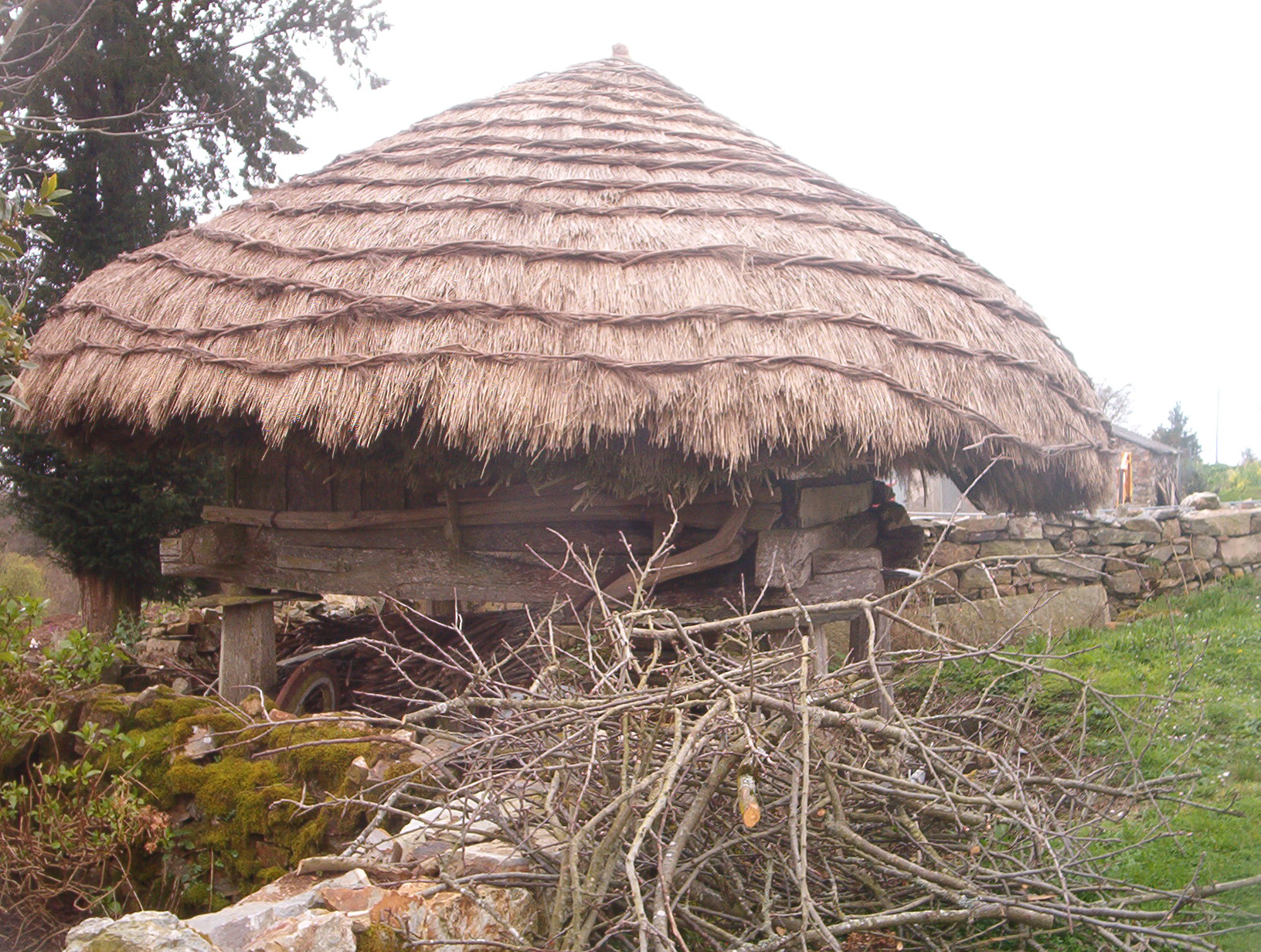Second Week: Grandas to Lavacolla

As you begin the second week on this Camino, you also cross from the Principality of Asturias into Galicia. The border is the high pass at El Acebo, where I found that there was highway construction in progress and the bar promised me by the Confraternity Guide was closed. On the positive side, the climb from Grandas up to El Acebo is much gentler than that to El Palo, a breeze at only 1030 meters. Thus you leave the land of cider and fabada asturiana, and enter the realm of fine wines and pulpo gallego (octopus, Galician-style), also known as polbo a feira (octopus, country fair style). And since the Galician Autonomous Region strongly supports the Pilgrimage, you can also expect to find some the best Albergues de Peregrinos of the whole route this week.
Other differences are visible too. Whereas the Asturian countryside is cultivated as lovingly as a gigantic garden, much of what you see as you cross the borderline looks like wasteland -- given back to gorse, heather, and chaparral. There is more managed forest, especially scrub pines, than pasture in Lugo Province. The Asturias look manicured. Galicia looks messy. Where have all the farmers gone?
On a practical level for pilgrims, you need to be aware that the ever-present representations of scallop shell tiles, used as directional markers, have undergone a reorientation too. Throughout the Asturias, the shells indicate your direction with the bottom, hinge part of the shell. In Galicia, they use the opposite, outer edge to show the Way. Or as a helpful "Camino Angel" told me years ago, when I was about to take a wrong turn, the shell really represents the Hand of St. James, and like any good hand, points you forward with its fingers, not the heel of the hand.
Perhaps the best part of this section of the Camino is that it brings you through a major city -- the ancient Roman fortress town of Lugo, offering town comforts and services that simply haven't been available since Oviedo. If you have the energy, the oldest part of the city still has intact Roman-era walls, and you can walk on them around the Casco Antiguo, stopping now and then for tapas and wine.
Relatively speaking, this is not a hard week compared to what you've endured so far, but there are some long stages to deal with:
| Stage | Distance | Time required |
|---|---|---|
| Grandas de Salime to A Fonsagrada | 25.9 km | About 7½ hours |
| Fonsagrada to Cádavo Baleira | 24.6 km | 6-7 hours |
| Cádavo Baleira to Lugo | 30.8 km | About 8 hours |
| Lugo to San Román de Retorta | 19.8 km | 5 hours |
| San Román de Retorta to Melide | 30.7 km | 7-8 hours |
| Melide to Arzúa | About 14 km | 4 hours |
| Arzúa to Lavacolla | About 14 km | 4 hours |
 Splash Page
Splash Page
 Next Page
Next Page